DC 2 J-BBOT „Aso“: lost over the vastness of the Pacific – and actually rescued!
A fuselage with metal covering, in which the glazed, closed cockpit is just as aerodynamically cleanly incorporated as the engine nacelles are blended into the shapes of the wings, a retractable landing gear, variable pitch propellers: this characterisation of the DC 2 would still fulfil the expectation of a modern aircraft today. Considering that the DC 2 had taken off for its maiden flight in 1933, this seems astonishing! How groundbreaking this design must have seemed, however, becomes really clear when one considers the contemporary competition: in Germany, the Ju-52/3m was just beginning to dominate the field, which, although corrugated iron clad, was still equipped with rigid landing gear and could not compete with the DC-2 in terms of performance. In the UK, types such as the HP.42 Heracles marked the national top, a spectacular-looking biplane design that made it clear by its very sight that it still belonged to the aftermath of Handley Page's World War I bombers. In short, when the DC 2, and soon the DC 3 that emerged from it, began their triumphal march at the beginning of the 1930s, it embodied a clear turning point in aeronautical engineering: all future designs would have to measure up to this design!
History of the DC 2
The creation of the DC 2 was itself prompted by a competitive situation. In 1932, Boeing had brought out its revolutionary Model 247, which scored highly in all the above-mentioned aspects of a modern aircraft. The Boeing 247, built exclusively for United Airlines, prompted airline competitor TWA to order a competitive all-metal aircraft of the same class from Douglas. The resulting DC 1, built in a single example and flown for the first time in 1933, represented the actual prototype of the DC 2. Tested in regular service from September 1933, the new design quickly convinced the market that a new era had dawned. Equipped with more powerful engines, the prototype went into series production under the designation DC 2. The abbreviation DC stands for Douglas Commercial, by the way, a designation that was to quickly become an enduring and well-known term in aviation.
With a length of 18.89 m and a wingspan of 25.91 m, the DC 2 could transport 14 passengers over a maximum distance of 1750 kilometres in unprecedented comfort and safety. The DC 2 was powered by two Wright Cyclone SGR-1820-F52s with an output of 887 hp each. The maximum speed was 338 km/h, the economic cruising speed was 306 km/h. The DC 2 was one of the first commercially successful passenger aircraft; after the impressive demonstration of the DC 1, TWA ordered 20 aircraft in the same month, the USAAC as well as the US Navy also registered their demand and took the DC 2 into service under the designation C-33/ C-39 (18/ 35 aircraft) or R2D-1 (5 aircraft). Numerous DC 2s were subsequently sold to Europe to be used by KLM, Swissair, LOT, Lufthansa and the Czechoslovakian CLS line, among others. A total of 201 DC 2s were to be built by the end of 1939; however, they were already surpassed from 1936 onwards by their larger and more powerful successor, the legendary DC 3/ C-47.
The year after its maiden flight, a special DC 2 made aviation history for the first time: the DC 2 Uiver, parked by KLM, achieved an outstanding second place in the prestigious MacRobertson air race in October 1934, whose route led from Mildenhall in England to Brisbane in Australia. That was also outstanding because the Uiver was only beaten by a machine specially designed for this race, the DH.88 Comet from DeHavilland.
DC 2 J_BBOT Aso
The history of the DC 2 also leads to Japan. Five machines went to the Far East Asian empire in a partially assembled state alongside a sixth, fully assembled machine, where they were used by Nihon Kōkū Yusō Kabushiki Kaisha - NKYK (Japan Air Transport Corporation) for passenger and mail transport. Later, another 32 AT-2s built at Nakajima were to follow, which closely resembled the underlying design of the DC 2. The six DC 2s of the NKYK also consolidated the excellent reputation of the Douglas design in Japan. In service with the airline, each of these aircraft was christened after one of Japan's sacred mountains. My model shown here represents the J_BBOT named after Mount Aso, which was to await a particularly interesting fate.
On 5 February 1940, this aircraft took off from Fukuoka to fly to Taipei in Taiwan, some 1280 kilometres away. The long-haul flight over the vastness of the Pacific was carried out by the crew Kuroiwa Toshio as pilot, Mori Ryoitchi as co-pilot and Senda Hideo as radio operator, with nine passengers on board. The flight became dramatic shortly after a stopover in Naha on Okinawa. Shortly after take-off at 15:09, the starboard engine suddenly began to run out of round and lose power. While flying over Uotsuri-shima, a small, rocky part of the Senkaku archipelago, the decision was made to continue the flight, but after the aircraft began to lose not only engine power but also altitude, an attempt was made to lighten the aircraft. In the meantime, the passengers had been informed about the emergency and had put on their life jackets, and now they began to throw luggage and unneeded material off the plane. In the meantime, Toshio had turned the plane back towards Uotsuri, so that in case of an emergency ditching, they would at least have land nearby. At about 17:15, Toshio and Ryoitchi managed to skilfully place the DC 2 Aso-go on the water surface of a shallow coastal section of the uninhabited and barren island. A distress call had been successfully made beforehand; another piece of good fortune was that all the occupants were unharmed during the emergency ditching, which was carried out with great skill.
The stranded began to set up a makeshift camp and light a fire that would not only keep them warm in the night, but also draw attention to themselves. Around midnight, the sound of a plane's engine was heard, and the fire was lighted. It was not until the morning, however, that we knew for sure that they had indeed been discovered. At 8am, the island was overflown by another DC 2 of the NKYK with registration and name BBOQ Tsukuba, the search plane and the stranded people made contact via flag signals, blankets and food were dropped by the J-BBOQ. The actual rescue, however, could only take place by ship - and it succeeded on the same day.
The crew and passengers of the DC 2 Aso were finally picked up by the two ships Shonan Maru and Keiun Maru, which had been sent for, and finally brought to Taiwan. Amazingly, pictures of these dramatic events exist: one of the passengers, Mr Kawashima Minoru, had his camera with him and had the nerve to remember to capture scenes of the rescue on film. If you are interested, these pictures and a report of the events can easily be found online.
Kit and building process
Special Hobby is always a good source if you are looking for unusual aircraft models. As important as the DC 2 is for aircraft history, the choice of kits is still quite limited. What SH puts in the box here can indeed be described as a "short run": the kit released in 2014 with the Japanese markings of the NKYK goes back to moulds that first came onto the market in 2000. Having said that, the build was surprisingly straightforward and essentially problem-free. Only the insertion of the fuselage windows seriously challenged me: the clear parts are exactly the same size as the window openings in the fuselage, no overhang facilitates gluing. How could I fit them in cleanly and without glue? This was aggravated by the fact that the clear parts did not all fit exactly; they still had to be trimmed and partly pressed into the openings with gentle force. I decided to cover both sides of the transparent parts with self-made masks. Protected in this way, they were fabricated into the openings and then attached from the inside with Revell's Clearfix. Before joining the fuselage halves, the masking on the insides was removed, of course. The hope was that the somewhat precarious fit of the clear parts would hold through the building process- and indeed it did!
The rest of the build did not present any more challenges, on the contrary, my enthusiasm for SH kits has steadily increased during this process: I found the accuracy of fit and the level of detail to be quite satisfactory to very good. The lack of detail in some places was brightened up with etched parts material for the fortunately quite similar DC 3.
In conclusion I can say that I enjoyed this project exceptionally well both in terms of the solid kit and in view of the interesting original. So I can warmly recommend Special Hobby's DC 2, even if the moulds are no longer quite dewy, to anyone interested!
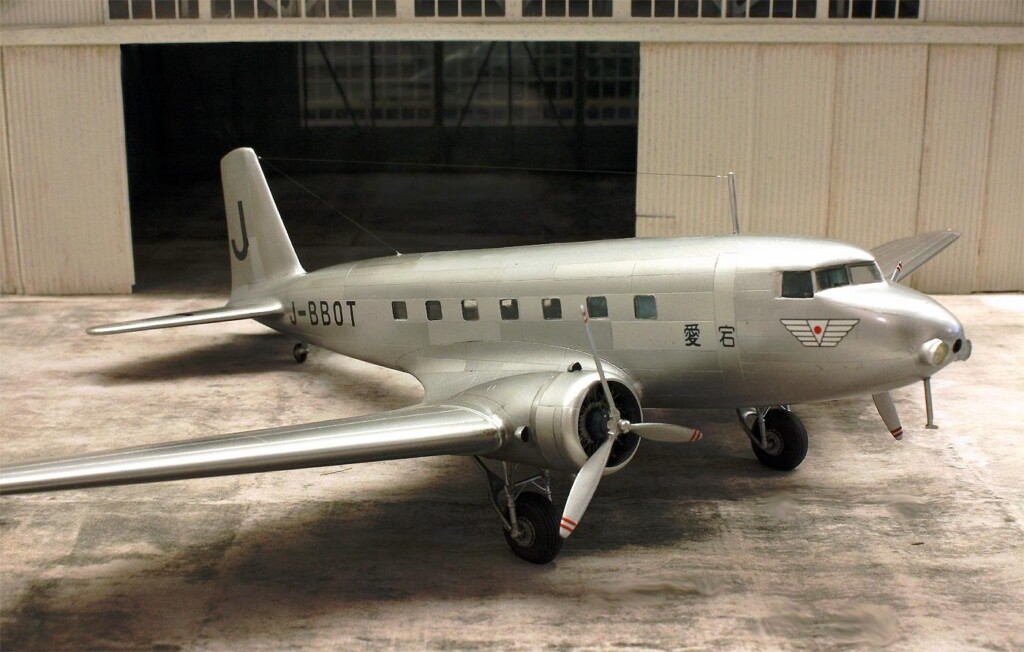
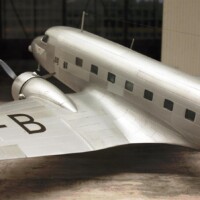
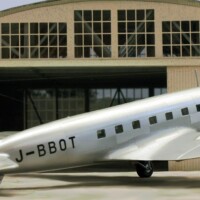
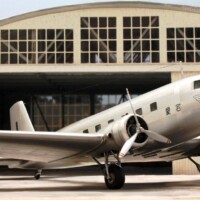
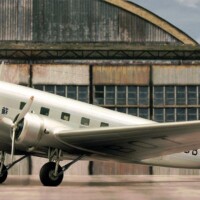
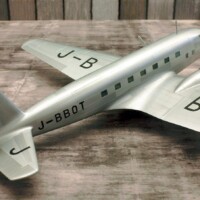
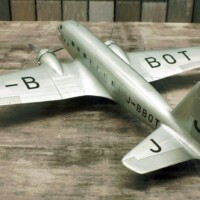
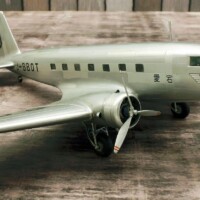
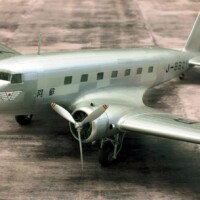
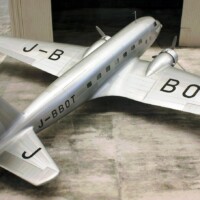
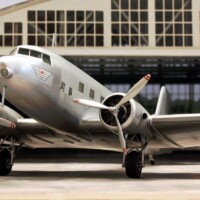
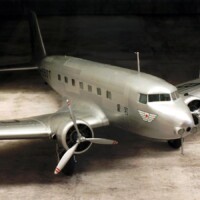
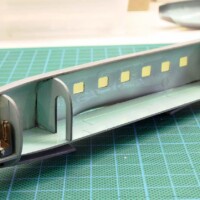
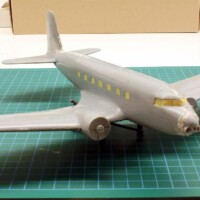
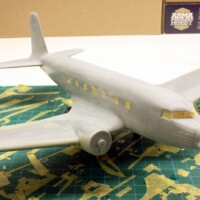
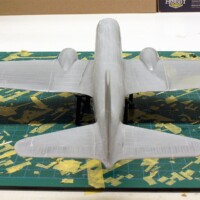
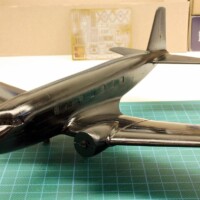
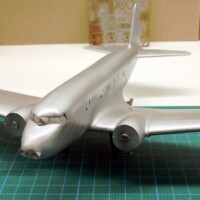
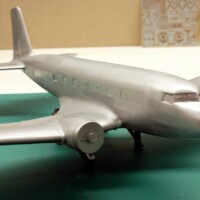
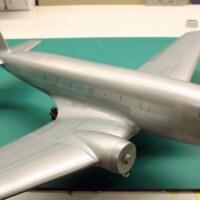
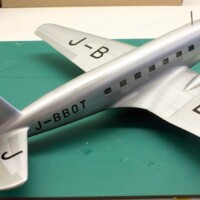
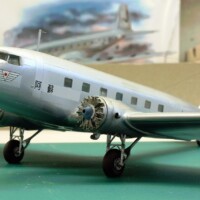
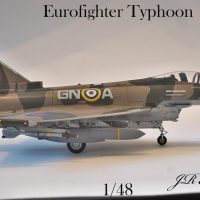
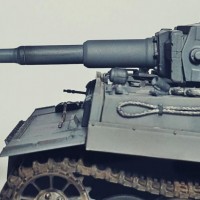
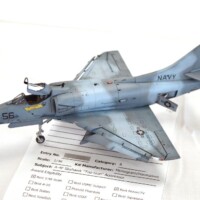
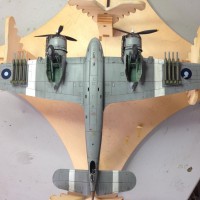
Nice build and presentation Roland.
Thank you Allan!
Beautiful build, Roland @rosachsenhofer
Impressive story about this aircraft as well and presented in a nicely written article.
Well done.
John, motivating indeed- thank you for your comment and "a"!
The "glass" is what stops me on these types of build, you have handled the issue perfectly. Beautiful model Sir.
Thank you! The matter with the "glass" is indeed a challenge that I prefer to approach in the way you describe. But it remains an adventure even so
Another great article, Roland @rosachsenhofer! I really enjoyed both the history and the beautiful model!
I really enjoyed both the history and the beautiful model!  Well done indeed, Roland.
Well done indeed, Roland.
As a personal aside, my very first airplane ride was aboard a regional Texas airline's DC 3 in 1966, on the first leg of our journey to our eventual destination of Geelong, Australia. It seems I remember us flying with a distinct starboard list most of the flight from Austin to Dallas. I remember how cramped and loud it was compared to the 707 we boarded in Dallas, quite a development from the old DC 3!
Your words delight and inspire me! The personal recollection, however, is really fascinating - a vivid and lively narrative that breathes real, experienced life into the plastic shown. thank you for that!
Gorgeous model Roland, and with a story I have never heard of until today. Thumbs up!
Pedro, thank you for these words!
Very fine build with an exceptionally well-done NM finish.
Thank you alot!
Excellent model and awesome write-up, Roland!
Words that motivate me!
Roland, A very nice build and an interesting story, kind of makes modeling a little more fun !
Thank you very much for your words- and interest!
More superbness from ROSachsenhofer Flugzeug GmBH! Also an excellent history lesson on a little-known event.
Back in 1997, I had the opportunity to go for a ride in the Planes of Fame Ford Trimotor, and four weeks later get a flight in a DC-3. Those to events explained everything about why the Douglas airliners became the dominant worldbeaters they were. The Ford was "tinny"; you could stand in the center aisle, stretch your arms out, and touch both sides of the cabin; it was cramped and noisy - to the point of having difficulty being heard by anyone, even yelling; and on takeoff, while Steve Hinton was getting the three engines to all put out the same power, we swerved around the runway like I never have before or since. It was, all-in-all, a bit hair-raising at moments when it was doing Standard Airplane Things. The DC-3 was an entirely different kettle of fish: large, roomy, seats for two beside each other on one side of the cabin; it wasn't noisy - you could have a conversation between two people sitting side-by-side; it exuded power; flight performance was smooth. As a friend said, it was the difference between a Ford Model-T and a Packard Limousine.
I've also been in a 247 - the cabin is narrow like the Trimotor, and unlike the DC-3, which has a floor above the main spars, the spars go through the cabin and you have to navigate over them. There is no way to do that easily - there's about 36 inches between them, which makes it difficult to step over, maneuver, step over again. It's also noisy.
That feeling of passenger comfort in the DC-3, which is what you used to feel in all airliners before the past 40 years when air travel became the Gate of Hell, is what sold people on air travel.
What a story! I am thrilled and deeply impressed, Tom. What you have seen and experienced is pure aviation history. Thank you for this impressive and to the point description and the comparisons of the machines involved here!
An excellent write-up as always, Roland, and a beautiful looking model standing in front of your now famous hangar.
George, words of motivation for me, thank you alot! Well... "in front of your now famous hangar"... is a special pleasure for me
An interesting story along with a very beautiful build.
Thank you John!
An interesting and well told bit of research. The model and the metallic finish are excellent - was it easy to mask and paint?
Thank your comment, Christopher! The Alclad II colours used are, in my opinion, quite uncomplicated to use. The shapes of the DC 2 are relatively straight, all corners and ends are easily accessible for masking, which makes the work even easier. I masked off and sprayed metal tones about four or five times until the present result was visible.
Great article and model. I enjoy bits of history that come with our hobby!
Thank you very much for you interest and comment, Greg!